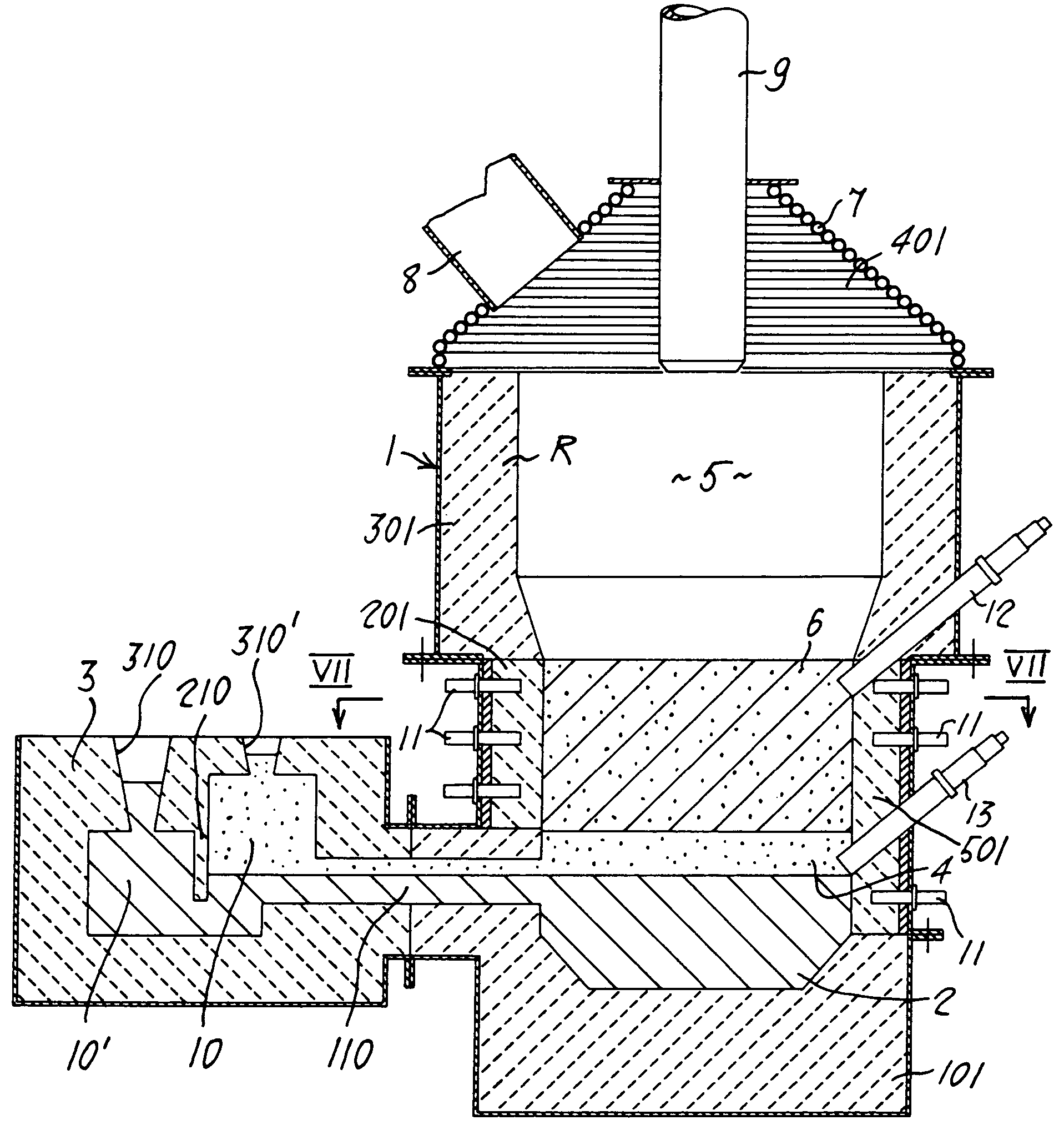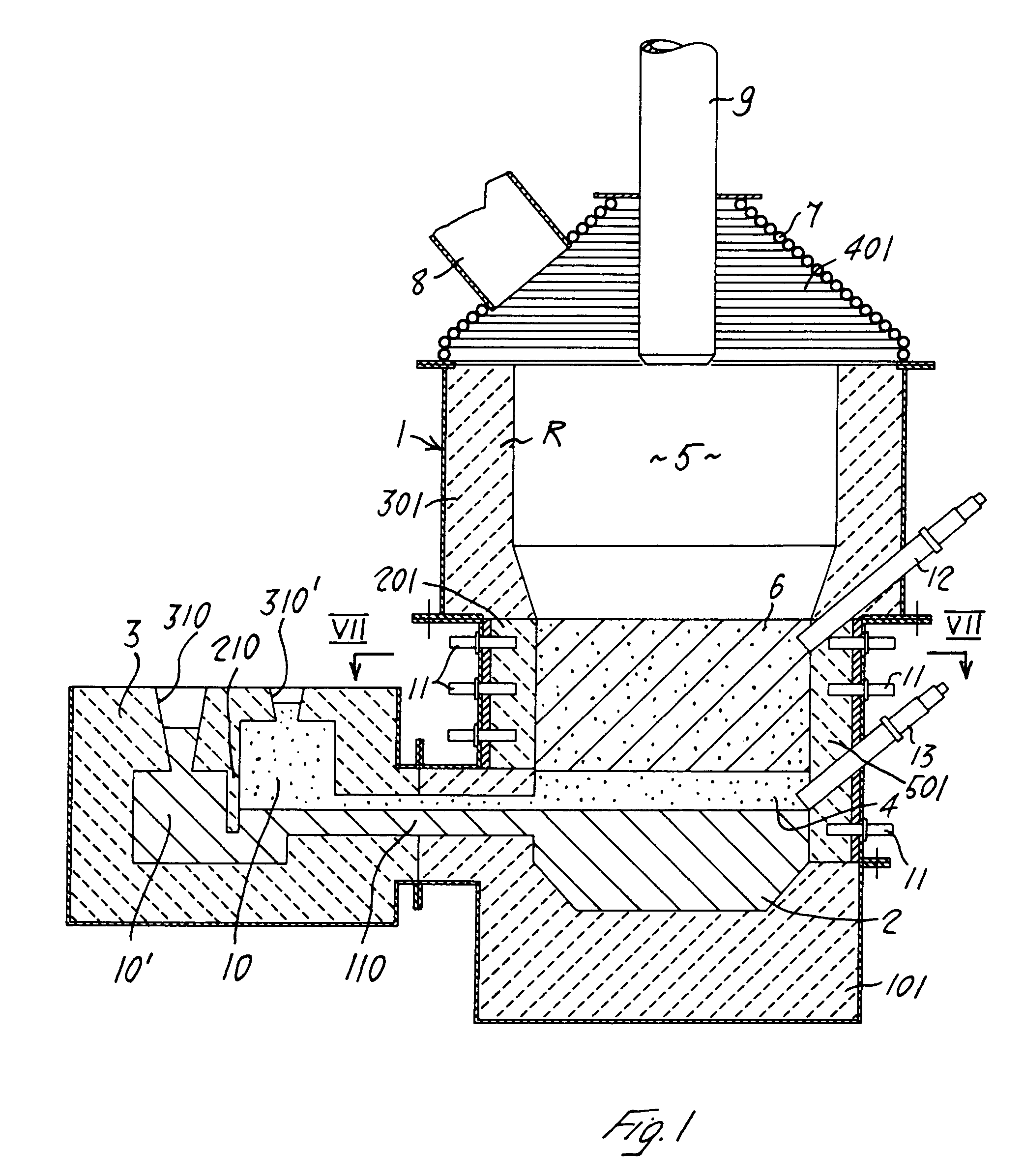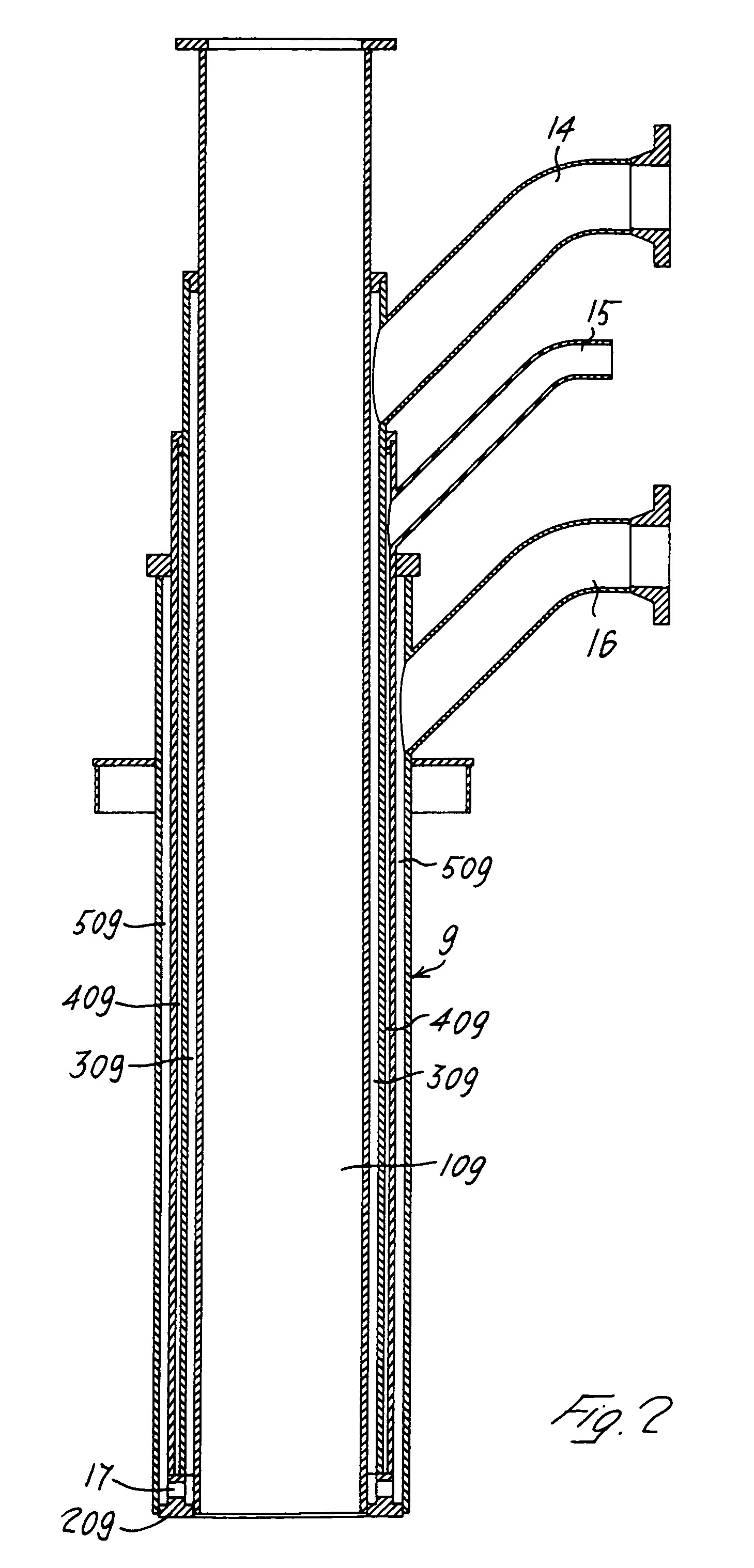Metallurgical reactor for the production of cast iron
- Summary
- Abstract
- Description
- Claims
- Application Information
AI Technical Summary
Benefits of technology
Problems solved by technology
Method used
Image
Examples
Embodiment Construction
[0020]With reference to the accompanying figures and in particular to FIG. 1 thereof, 1 denotes the metal casing of the reactor, having an approximately cylindrical shape. This casing 1 is lined internally at least partially with a refractory material R suitable for containing the reacting materials. In the reactor shown it is possible to distinguish three zones containing liquid with a density decreasing from the bottom upwards, namely the liquid cast iron bath 2 contained in the crucible 101, the transition zone 4 for the cast iron 2 and the actual slag 6, both contained inside an approximately cylindrical casing. The reactor wall has, formed therein, level with said transition layer 4 a hole 110 communicating with an external “calming” well 3 which allows settling of the two phases 2 and 4 and separation from each other as a result of overflow, by means of a suitable diaphragm210 consisting of two different sections 10, 10′ of the said well, for extraction said phases from the re...
PUM
| Property | Measurement | Unit |
|---|---|---|
| Height | aaaaa | aaaaa |
Abstract
Description
Claims
Application Information
 Login to View More
Login to View More - R&D
- Intellectual Property
- Life Sciences
- Materials
- Tech Scout
- Unparalleled Data Quality
- Higher Quality Content
- 60% Fewer Hallucinations
Browse by: Latest US Patents, China's latest patents, Technical Efficacy Thesaurus, Application Domain, Technology Topic, Popular Technical Reports.
© 2025 PatSnap. All rights reserved.Legal|Privacy policy|Modern Slavery Act Transparency Statement|Sitemap|About US| Contact US: help@patsnap.com



